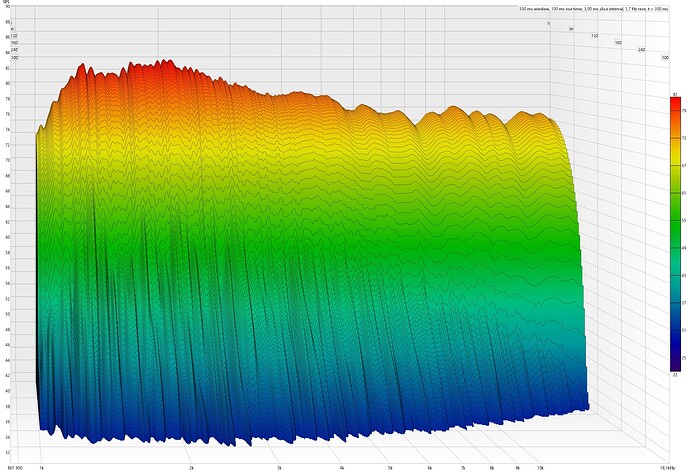There’s a very interesting and potentially important article in the October 2023 issue of AudioXpress. The author is Reinhold Lutz. As most know, speakers are often measured today using a near field measurement for the low-end, and a far-field measurement for the high end. In the near-field measurement, the mic is placed very close to the dust cap (10mm or less). In the far-field measurement, the mic is placed roughly 3 times the distance of the largest speaker dimension.
In the near field, room reflections are rendered insignificant because they are so small relative to the signal picked up by the mic. In the far field, the room reflections are significant. The mic is far from the signal source, and the reflections are substantial enough they can impact the measured signal. So, you combat this by a using a large enough room AND time gating. Note that the time gating requirement is what prevents you from using the far-field technique at low frequencies. That is, if you want to measure a 50 Hz tone, you need a gate that is at least 1/50=20 mS to capture the tone. But that suggests a massive room.
And then the challenge becomes “stitching” the two measurements together.
The Lutz article proposes a different approach. And the summary I’ve taken away from the article is thus: You use two matched microphones, spaced 5 cm apart. The signal from the mics are subtracted, which eliminates the room effects–because the mics are so close, they will see the same room reflections. And so subtracting the matched mic signals will null the room reflections. The “near” mic is placed 5 cm from the speaker. The “far” mic is thus 10 cm from the speaker. Both mics will capture the direct sound from the speaker. But, due to the inverse square law, the far mic amplitude will be about 1/4 that if the near mic. And so, this is a 6 dB difference.
A prototype has been built as shown below:
The prototype has two well matched MEMS mics (ICS40619). A small processor is used to turn the mics on an off. Press the button and the mics run for 20 minutes. For every button press, you add 20 minutes of run time. Run time from the CR2032 battery should be hundreds of hours. The battery is 235 mAH, and the CPU, LDO and two mics are under 2uA. When not running, the off current can get down to 200nA and so it can live in a drawer for a long time.
First Look
Placed above an 8" speaker, the near and far mic response can be seen in a normal spectrum plot. The yellow is near, the red is far. The difference between the signals is 7.1 dB. But remember, this will include room reflections.
Room response is best viewed in the time domain, with near subtracted from far. In the plot below, the mics were moved throughout the room to look at how the various reflected signals were picked up. The signal seen by each mic was substantially the same. This is a very important point–because it means when the mics are placed at the speaker, the reflections there will be substantially the same too.
This is the key point: Speaker amplitudes picked up by the mics will be very different due to inverse square law (roughly 6 dB). But the room reflections picked up by the mics will be nearly the same.
Putting the pieces together
In the Lutz article, the math were performed in the analog realm, and a dial was adjusted to null. In the digital realm, we can maybe refine things a bit further.
Let M1 be the near mic, and M2 be the far mic. The far mic (M2) amplitude will be 0.25 that of M1. The reflections (R) will be M2-0.25*M1.
The true speaker response (TSP) is:
TSP = M1 - R = M1 - (M2- 0.25*M1).
The above hasn’t been tried, it’s just speculation at this point.
Comb Filtering Effects
The mics are well matched for amplitude and phase. However, as the frequencies of interest increase, eventually the 5 cm mic spacing will be 180 degrees out of phase and instead of the signals cancelling, they will add. This problem will be present for both reflected and direct signals. The first null frequency will occur around 1.72 kHz for the 5 cm spacing. So, as the frequency increases above 300-500 Hz, the comb filtering begins to become more pronounced and must be compensated for. But luckily, as the frequency gets higher still, time gating with a far field measurement can be used to eliminate the room reflections.
Summary
The technique described by Lutz seems important and significant. And with today’s well-matched MEMS mics, potentially very low cost as well. To date, far field measurements can be made in reasonably sized rooms. But low-frequency measurements below 100 Hz or so have been difficult due to the long gating times required to capture the frequencies involved. Lutz’ technique may have changed that.














